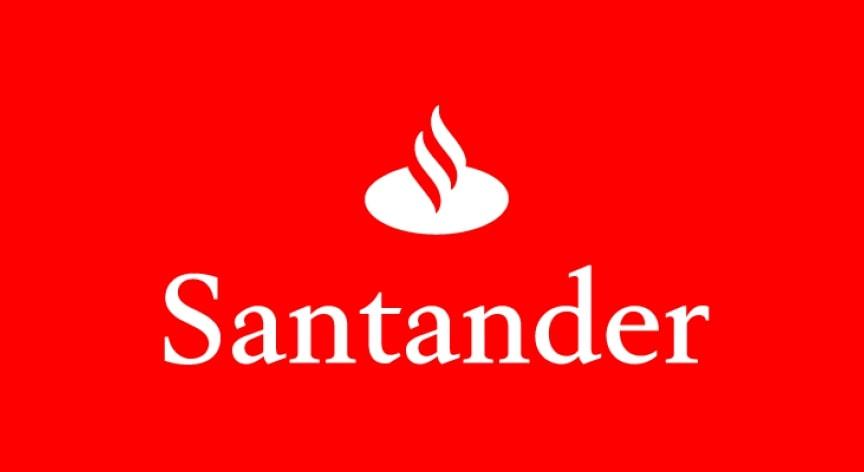Contents:
Determine significant support and resistance levels with the help of pivot points. A flag is a technical charting pattern that looks like a flag on a flagpole and suggests a continuation of the current trend. If you are a new trader, we recommend that you spend a lot of time learning and applying them in a demo account. It is accurate – While it is not 100% accurate, the wedge pattern has a high degree of accuracy. It is easy to use – As you can see above, it is relatively easy to use the wedge pattern.

What is descending wedge vs descending triangle?
The falling wedge appears in a downtrend and indicates a bullish reversal. A descending triangle appears after a bearish trend with a probable breakdown continuation. The falling wedge appears in a downtrend but indicates a bullish reversal.
I do this because I like to take some profit off the table as something moves further into profit – I hate having only one position with one profit target, which is too limiting. The nice thing about the Fibonacci extension tool is that it basically gives you your profit targets. As price moves beyond the downtrend angle, observe how fast price breaks out higher . This is especially true in markets where shorting is easier and more common than in traditional fixed-volume equity markets.
Rising Wedges
In the chart example above, the falling wedge ended up being a continuation pattern. This is because the overall trend was up to begin with, so when the price broke out of the wedge to the upside, the uptrend continued. In this case, the pullback within the uptrend took on a wedge shape. Stop loss orders should be placed above the rising wedge and below the falling wedges.

Notice how we are once again waiting for a close beyond the pattern before considering an entry. That entry in the case of the falling wedge is on a retest of the broken resistance level which subsequently begins acting as new support. The falling wedge is the inverse of the rising wedge where the bears are in control, making lower highs and lower lows. This also means that the pattern is likely to break to the upside. 🟢 RISING THREE “Rising three methods” is a bullish continuation candlestick pattern that occurs in an uptrend and whose conclusion sees a resumption of that trend. The first bar of the pattern is a bullish candlestick with a large real body within a well-defined uptrend.
High-Probability Trade Setups: A Chartist’s Guide to Real-Time Trading by
First, to achieve an equivalent slope, the convergent trend lines must be converging. Then, a bullish symmetrical triangle must develop in a market with an uptrend, with prices breaking through the top trend line. Lastly, in a downturn, a bearish symmetrical triangle must develop, and prices must break through the bottom trend line. Both of the trend lines in the falling wedge are sloping downwards, with a shrinking channel signaling an impending decline.
Is a descending wedge bullish?
As a reversal pattern, the falling wedge slopes down and with the prevailing trend. Regardless of the type (reversal or continuation), falling wedges are regarded as bullish patterns.
This pattern also attracts new traders who want to short. Since the patterns are drawn based on automated software, use discretion when deciding which wedge patterns to use for trading or analysis. The software will automatically draw wedge patterns on the chart, past and present. The Cyber Security share basket, which is also available to trade on our platform, provides an example of an ascending wedge. The price action is moving up within the wedge, but the price waves are getting smaller. In both cases, we enter the market after the wedges break through their respective trend lines.
What is a Rising Wedge Pattern?
By signing up as a member you acknowledge that we are not providing financial advice and that you are making the decision on the trades you place in the markets. We have no knowledge of the level of money you are trading with or the level of risk you are taking with each trade. In an ideal scenario, an extended downward trend with a definitive bottom should precede the wedge. This downward trend should prevail for a minimum of 3 months. The wedge pattern itself usually takes a quarter to half a year to form. The upper trend line should have a minimum of two high points with the second point lower than the previous and so on.
VeChain (VET) Price Outlook For February Is Bullish – BeInCrypto
VeChain (VET) Price Outlook For February Is Bullish.
Posted: Fri, 10 Feb 2023 08:00:00 GMT [source]
We’re looking at the wedge that formed from May 29th, 2019 to June 4th, 2019. We’ve already established that the entry is on the breakout of the wedge. Flags and pennants let traders know that a resumption of the prior move is about to continue. One of the time tested and true ways to trade on a candlestick chart is continuation patterns. Don’t quote me on this, but I believe that those results are based solely on the performance in the stock market. The performance level of patterns is going to vary from one market to another.
This pattern is distinguished by a narrowing price range combined with either an upward or a downward price trend. Trading chart patterns are an important aspect of cryptocurrency trading and have always been a vital part of forex trading. Not only do they help analysts figure out which stock is weak and which is strong, but they also help them figure out when to buy or sell.
Our USD/CAD descending wedge pattern below provides an example of a falling wedge. Mean Reversion Definition Reversion to the mean, or “mean reversion,” is just another way of describing a move in stock prices back to an average. We should enter the market with the break through the signal line of the wedge. In this post, we’ll uncover a few of the simplest ways to spot these patterns. Likewise, will give you the best way to predict the breakout and trade them.
Real-Time Stock Alerts
At the same time, when you get a descending wedge, you should enter the market whenever the price breaks the upper level of the formation. Hello dear traders, Here are some educational chart patterns you must know in 2022 and 2025. I hope you find this information educational and informative. We are new here so we ask you to support our views with your likes and comments, Feel free to ask any questions in the comments, and we’ll try to answer them all, folks. The descending triangle is a chart pattern used in technical analysis. The pattern usually forms at the end of a downtrend but can also occur as a consolidation in an uptrend.
- A trader’s success with wedges will vary depending on their win rate, risk-management controls and risk/reward over many wedge trades.
- Notice how all of the highs are in-line with one another just as the lows are in-line.
- As a result, some starts to sell and take profits, which pushes the price lower.
- In a rising wedge, both boundary lines slant up from left to right.
- They can be traded on both short and long term time frames and offer defined entry and exit points.
- A wedge pattern is a triangular continuation pattern that forms in all assets such as currencies, commodities, and stocks.
It cannot be considered a valid rising wedge if the highs and lows are not in-line. Rising Wedge appear in uptrend and it indicates that the… When the falling wedge breakout indeed occurs, there’s a buying opportunity and a sign of a potential trend reversal. If the rising wedge forms after an uptrend, it’s usually a bearish reversal pattern.

These two positions would have generated a total profit of 80 cents per share by JPM. Above is a daily chart of Google and a 10-minute chart of Facebook showing the exact trigger for entering a position. See the lesson on the head and shoulders pattern as well as the inverse head and shoulders for detailed instruction. Or in the case of the example below, the inverse head and shoulders. If the market hits our stop loss in the image above it means a new low has been made which would invalidate the setup.
First, the price of an asset needs to be in a strong upward trend. In today’s report, we will look at another interesting pattern known as the wedge pattern and how you can use it in the financial market. Both of the boundary lines of a falling wedge tilt downwards from the left to the right. Due to the confident mindset of the investors who anticipate the trend to persist, these reversals can be rather severe. The simplest approach to notice the narrowing of the channel, which is the initial significant clue that a reversal is brewing, is to use trend lines.
In a falling wedge, both boundary lines slant down from left to right. The upper descends at a steeper angle than the lower line. Volume keeps on diminishing and trading activity slows down due to narrowing prices. There comes the breaking point, and trading activity after the breakout differs. Once prices move out of the specific boundary lines of a falling wedge, they are more likely to move sideways and saucer-out before they resume the basic trend. A falling wedge pattern is seen as a bullish signal as it reflects that a sliding price is starting to lose momentum, and that buyers are starting to move in to slow down the fall.
If we have a falling wedge, the equity is expected to increase with the size of the formation. Ideally, you’ll want to see volume entering the market at the highs of the ascending bearish wedge. This is a good indication that supply is entering as the stock makes new highs. A good way to read this price action is to ask yourself if the effort to make new highs matches the result. Second, find a market that has been trending higher or lower. Third, see if you can identify a wedge pattern as discussed in this post.
A bullish symmetrical triangle is an example of a continuation chart with an uptrend. Two symmetrical trend lines that are convergent make the pattern. The action preceding its development has to be bullish in order for it to be termed bullish. Since both of these apply to symmetrical triangle patterns, depending on the case, this pattern can show as a bullish or a bearish trend. Since crypto is one of the most popular trading assets, it is quite usual to observe wedge patterns forming in its charts.
- As you may have guessed, the approach to placing a stop loss for a falling wedge is very similar.
- This indicates that the price may continue to fall lower if it breaks below the wedge pattern.
- It consists of two nonparallel lines that, if extended, will meet on their right side.
- However, the golden rule still applies – always place your stop loss in an area where the setup can be considered invalidated if hit.
- You simply wait for the two lines to reach its confluence point.
A https://g-markets.net/ wedge is formed when the price consolidates between upward sloping support and resistance lines. Wedges can be tricky to identify since the trend preceding the formation of the wedge can be encompassed partially or entirely within the wedge itself. As the trading price range narrows as the wedge progresses, trading volume should decrease. Trading stocks, options, futures and forex involves speculation, and the risk of loss can be substantial. Clients must consider all relevant risk factors, including their own personal financial situation, before trading. Trading foreign exchange on margin carries a high level of risk, as well as its own unique risk factors.
Can a falling wedge break down?
Wedges can present as both a continuation and a reversal pattern. This means the price may break out of the wedge pattern and continue in the overall trend direction of the asset. However, the price may also break out of a wedge and end a trend, starting a new trend in the opposite direction.
